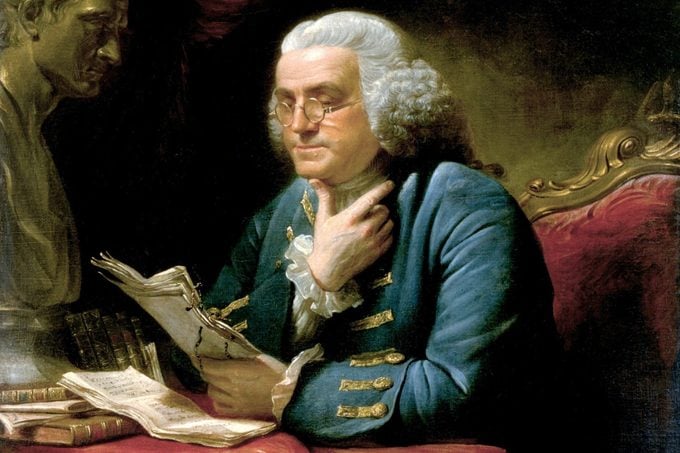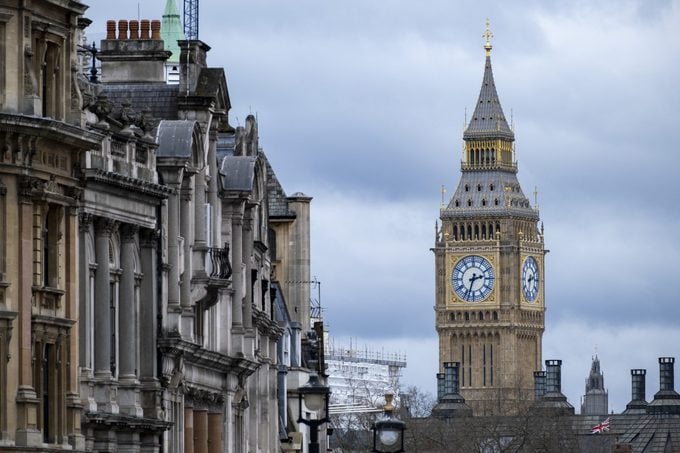What Is Daylight Saving Time, and When Does the Time Change in 2024? (original) (raw)
Daylight saving time officially ends on the first Sunday of November. It started on the second Sunday of March, which meant one less hour of sleep during the transition (also known as “springing forward”). However, with daylight saving time ending in November, this means we’ll be “falling back,” causing many of us to gain an extra hour during the switch (and earlier sunsets, bummer!). Though there is a movement to end daylight saving time, this twice-annual tradition is currently observed by more than 70 countries worldwide, including the United States, save for two states.
But what is daylight saving time, exactly, and what is the point of it? Read on to find out.
Get Reader’s Digest ’s Read Up newsletter for more knowledge and insights, humor, cleaning, travel, tech and fun facts all week long.
What is the concept of daylight saving time?
 vjanez/getty images
vjanez/getty images
To start off, it’s daylight saving, not “savings,” as it is commonly called. Daylight saving time, also known as DST, is a practice where we advance the clocks by one hour on the second Sunday of March and set them back by one hour on the first Sunday of November, at 2 a.m. The goal of DST is to make better use of the varying daylight hours caused by the Earth tilting at different points during its orbit.
Since the Earth tilts at different times of the year, this gives us our Northern Hemisphere seasons (and reverses them in the Southern Hemisphere). It also contributes to the shortening and lengthening of daylight hours. By moving the clocks forward an hour in sun-rich spring, shortly before the spring equinox, the intention is that the majority of the day will be lived under full daylight hours, until the time changes again in fall.
When does daylight saving time start in 2024?
Daylight saving time always starts and ends at 2 a.m. in the United States. This year’s daylight saving time started on Sunday, March 10, and ends on Sunday, Nov. 3.
Here are the future start and end dates for 2025 and beyond:
- 2025: Sunday, March 9, to Sunday, Nov. 2
- 2026: Sunday, March 8, to Sunday, Nov. 1
- 2027: Sunday, March 13, to Sunday, Nov. 7
- 2028: Sunday, March 12, to Sunday, Nov. 5
Why do we have daylight saving time?
 GraphicaArtis/Getty Images
GraphicaArtis/Getty Images
There are several stories about the origins of the DST concept. You might have heard that the idea stemmed from Benjamin Franklin, but that’s not strictly true. He did write a satirical letter to The Journal of Paris (where he was living in 1784) suggesting that the city would save 64 million pounds of candle wax if only its citizens would rise with the sun, but he also included a recommendation that they get the people on schedule by firing cannons in every street as a citywide alarm clock. We’re grateful for Franklin’s other inventions but glad this particular one did not catch on.
It wasn’t until 1908 that Thunder Bay, Canada, became the first city to implement daylight saving time. Its purpose: to preserve daylight hours in the winter months. Then, in 1916, Germany and Austria became the first countries to implement DST, to save money on energy costs during World War I.
When did daylight saving time start in the United States?
While the World War I–era changes in Germany and Austria launched a daylight saving practice that was followed by most of Europe, the United States didn’t follow suit until March 19, 1918, when the Standard Time Act was signed into law. (This law also established our five time zones.) But the story doesn’t end there. After World War I, the DST federal law was repealed, before being resurrected during World War II with the intent of saving money on energy costs. After the war, DST was made optional, which led to absolute chaos when traveling. A 35-mile bus journey from Moundsville, West Virginia, to Steubenville, Ohio, meant going through seven different time changes!
Finally, in 1966, Congress passed the Uniform Time Act, standardizing DST for the six months from April to October. It was extended to seven months in 1986, and finally to eight months in 2005, leaving us with the March–November DST we have today—in 48 states, at least.
What U.S. states don’t do daylight saving time?
There are only two U.S. states that don’t observe daylight saving time: Hawaii and Arizona (except the Navajo Nation, in northeastern Arizona). Perhaps because both those states get plenty of sunshine year-round, they don’t feel the need to hoard it.
Do other countries practice daylight saving?
 Mike Kemp/Getty Images
Mike Kemp/Getty Images
Only about a third of the world’s countries practice daylight saving time—most in Europe, with Egypt being the only African nation that observes it.
In the U.K. and other European countries, where daylight saving is known as “summer time,” DST begins on the last Sunday of March and ends on the last Sunday of October. Another interesting fact? The only European countries that don’t currently follow the practice are Armenia, Azerbaijan, Georgia, Belarus, Iceland, Russia and Turkey.
Will daylight saving be eliminated in the United States?
As of now, no! However, Sen. Marco Rubio’s Sunshine Protection Act was reintroduced in March 2023. If enacted, the bill would end “falling back” in November, allowing us to keep a full year of DST. Progress has yet to be made, so as of now, daylight saving time is here to stay.
Why trust us
At Reader’s Digest, we’re committed to producing high-quality content by writers with expertise and experience in their field in consultation with relevant, qualified experts. We rely on reputable primary sources, including government and professional organizations and academic institutions as well as our writers’ personal experience where appropriate. We verify all facts and data, back them with credible sourcing, and revisit them over time to ensure they remain accurate and up to date. Read more about our team, our contributors and our editorial policies.
Sources:
- Time and Date: “Daylight Saving Time Statistics”
- U.S. Department of Defense: “Daylight Saving Time Once Known as ‘War Time'”
- Pew Research Center: “Most Countries Don’t Observe Daylight Saving Time”
- Press release from Sen. Marco Rubio: “Rubio Reintroduces Bill to Make Daylight Saving Time Permanent”
[